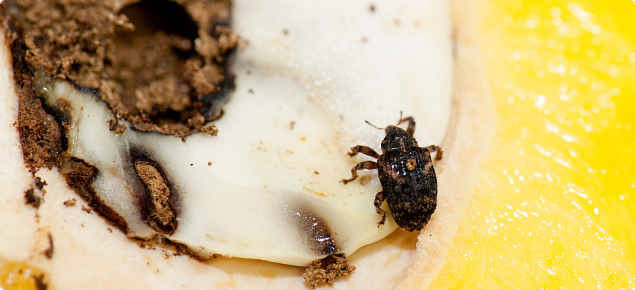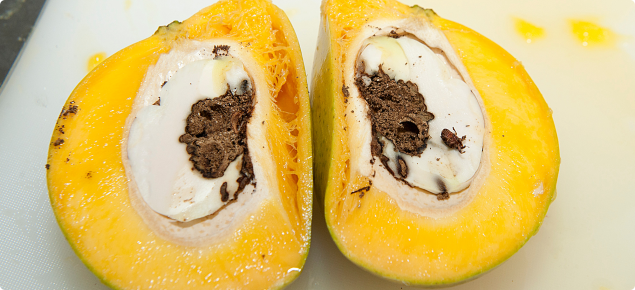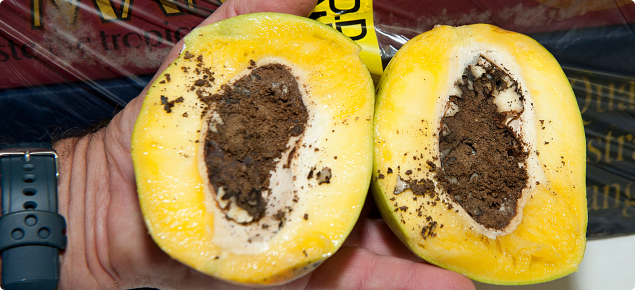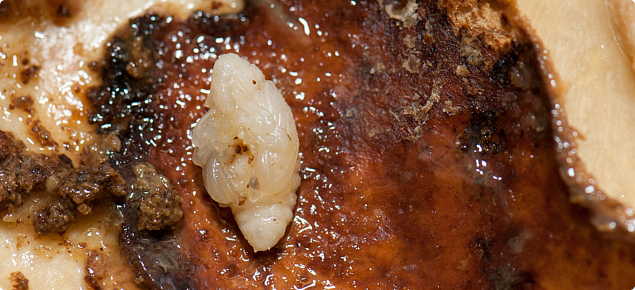What plants are affected?
Complete development of the mango seed weevil is only possible in mango fruit (Mangifera indica).
What do I look for?
Mango seed weevil is rarely seen in the orchard. Infested fruits are difficult to detect.
- Egg laying sites are seen as brownish spots on the fruit rind which normally fade as the fruit ripens.
- Larvae develop within the mango seed and are rarely seen unless the seed is cut open.
- Evidence of its presence includes increased fruit drop, egg-laying scars and associated exudates on the fruit, as well as poor seed germination.
What damage can this pest cause?
Mango seed weevil can cause significant losses both in the quality and quantity of mangoes produced.
- Severe infestations can cause 80% fruit loss in certain conditions.
- Significant egg laying can damage the appearance of the fruit causing it to be rejected at harvest.
- Infestations can reduce the viability of seed, affecting nurseries wishing to grow seedlings.
What do I do if I find it?
Sternochetus mangiferae (Fabricius, 1775) is a prohibited organism for Western Australia. It is important that any suspect infestations are reported. Early detection and eradication will help protect the Western Australian mango industry. Please contact the Pest and Disease Information Service (PaDIS) to report this pest.





